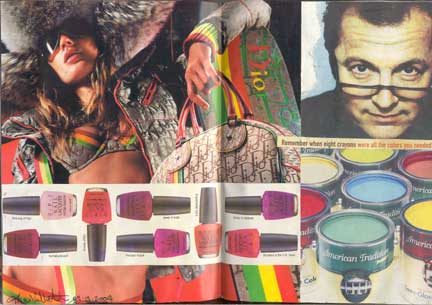 This is going to be short and sweet, because I’ve already written two long articles about gluebooks for Go Make Something.
This is going to be short and sweet, because I’ve already written two long articles about gluebooks for Go Make Something.
A gluebook is a glued collage journal. The basic steps for gluebooking are:
- Find a book. Any book that works for you. Any size that works for you. Any paper weight that works for you. Some gluebookers like composition books, because they’re cheap and easy to get. Some use old printed books. Some make their own journals from folded paper or magazine pages. Whatever book you choose to use is fine, because it’s your gluebook.
- Find some glue. Any glue that works for you, and doesn’t make your paper ripple, or make you cuss while you’re working. I use a glue stick when I gluebook. Some people like matte medium, or Elmer’s glue, or rubber cement. Don’t use Mod Podge, because your finished pages will stick together, no matter how long you let it dry. Beyond that, any glue is fine.
- Find some stuff to glue. Most glue monkeys use magazines, junk mail, and whatever paper fallout they collect during the day. The object here is not to go out and buy stuff like stickers or papers, but to use whatever is headed to the recycle bin. Receipts. Envelopes from bills. Flyers stuck on your front door. Paper food packaging.
- Glue like there’s no tomorrow. Arrange your paper bits on the pages of your book, and glue. Make pretty pictures, or funny ones, or creepy ones. Add words, or make a whole page of words. Use images and no words. Whatever. Glue stuff down so that it says something to you.
Bam. You’re a glue monkey. That’s really all there is to gluebooking. There are no techniques, or products, or rules. Just glue stuff.

To learn more about gluebooks, try these two articles I’ve posted at Go Make Something:
Discovering Gluebooks, written in 2004, was the first English-language article ever written about them.
How Discovering Gluebooks Changed My Life, written ten years later, in 2014, about how a decade of gluing had influenced my art, and my career.
